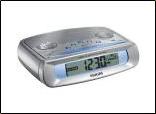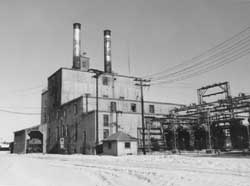 |
| ||||||
Backup Power
Backup Power Supply refers to an alternative source of power that can be used in case of a power failure. Therefore Backup Power Supply can have a wide range of meanings. Even the term Electric Backup Power Supply is a rather broad concept. It can range from a 9 V-battery powering a Radio-Receiver to a Coal-Fired power-plant generating 10MW in case of a disruption in a Hydro Electric power plant.Fig 1. Examples of Backup Power Supply units
 |
 |
| a. Small unit (1W) | b. Big Unit(10MW) |
Figure 1b above depicts an old Coal-Fired power plant in Fairbanks, Alaska that belongs to Golden Valley Electric Association (GVEA). GVEA plans to replace a substantial part of its Coal-Fired backup power supply with a huge battery system generating 26MW. This system consists of 13760 Nickel-Cadmium cells manufactured by Saft AB in Oskarshamn, Sweden.
Other examples of Electric backup power includes:
- Solar Electric Power
- Electric generator powered by a combustion engine.
- UPS (Uninterruptible Power Supply) where switching between ordinary and alternative power supply can be done without any interruption.
HowStuffWorks – How Emergency Power Systems Work
Diesel engine + Generator
When you talk about backup power in the electric power industry you often refer to a internal combustion engine that drives a generator. When a power failure occurs the engine starts and provide power to the generator for electricity.
UPS
In many cases the short interruption within the time it takes for the generator to kick in and come up in the right speed is not acceptable. For example when the electricity is made for computers.
In these cases a UPS comes in handy. A UPS consists of a rectifier that charges batteries, together with an inverter that converts DC from the batteries to AC for electricity.
During a normal operation the batteries charges with as much current as they consume. During a power outing the charging of the batteries stops, but the inverter continues to work normally as long as capacity remains in the batteries.
When the diesel engine kicks in and the generator reaches the right speed the batteries can start recharge again.